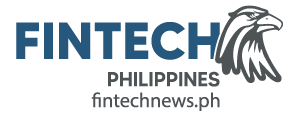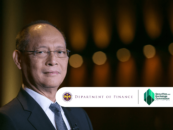The Philippines’ wealthtech sector, which somehow still remains at a nascent stage of development, is poised to witness strong growth in the mid- and long-term, driven by booming demand for digital financial services, growing wealth and economic development, and rising adoption of new technologies, a new report by Urs Bolt, a wealth management professional and wealthtech advisor, says.

Urs Bolt
The report, titled Navigating Prosperity: Unveiling the Future of Wealthtech in the Philippines, explores the current state and future prospects of wealth management in the Philippines, outlining the rise of digital platforms and the importance of user experience design, and providing an overview of the state of the wealthtech sector in the Philippines.
According to the report, the Philippines, with its large unbanked population and economic growth, presents a promising landscape for fintech, digital banking solutions and wealthtech services for the Philippines.
The Philippines has one of the most populous countries in Southeast Asia, with over 115 million people as of 2022. It has a youthful population, with a median age of 25.7 years, and Millennials, born between 1981 and 1996 and Gen Z, born between 1997 and 2012, collectively comprising over 56% of the population.

At the same time, the wealth foundation in the Philippines is still low but is growing at a faster pace compared to many other markets. This year, assets under management (AUM) in the wealth management sector are expected to reach US$121.1 billion and will follow a forecasted annual growth rate of nearly 4% between 2023 and 2027 to reach a volume of US$141.2 billion by then, data from German statistical portal Statista show.
The report says that these factors will give rise to wealthtech solutions in the Philippines, driven by growing demand from the country’s large mass affluent segment. These consumers are seeking personalized and tech-savvy solutions that align with their financial goals and expectations, and are increasingly favoring digital platforms with seamless and user-friendly experiences, it says.
The report also notes that new investment products and asset classes are gaining traction in the Philippines, not only for the ultra-wealthy segment but also for mass affluent investors. Notable products that are rising in popularity include cryptocurrencies, private assets and exotic assets such as luxury items and collectibles.
These options are providing affluent investors with diversified opportunities to grow their wealth beyond traditional investment instruments, it says.
This trend is supported by findings of research conducted by blockchain analysis firm Chainalysis, which found the Philippines to be the second and sixth country in the world in terms of crypto adoption in 2022 and 2023, respectively.
The rise of wealthtech in the Philippines
Discussing the nascent stage of wealthtech solutions in the Philippines, the report notes that the sector remains in the early stage of development, with only about ten fintech startups in the space.
These companies are mostly product-centered and deliver digital platforms and distribution channels for online trading and investment products. These solutions don’t prioritize investors’ long-term and sustainable wealth building in line with their personal situations, suggesting that opportunities still exist in these areas.
In the mid-term, Bolt expects to see continued growth of digital wealth solutions along with the expansion of super-apps and neobanks to support these solutions. The market may also experience a greater adoption of open banking, open wealth, and open finance standards, a move towards standardization that’s set to enhance industry collaboration, interoperability and easier decision making for consumers. Artificial intelligence (AI), meanwhile, is set to become a pivotal technology in providing highly personalized and efficient wealth management services, he says.
Bolt asserts an optimistic outlook for the the wealth and wealthtech market in the Philippines, citing economic expansion and demographic development as key drivers. He emphasizes the crucial role of technology in delivering wealth advisory services to a wider audience with the implementation of a customer-centric service model, simplified by modern technology and innovative business models such as embedded wealth management and mobile apps.
In addition, concepts such as mass customization, data-driven advice, goal-based investing, and hybrid advisory will converge to benefit customers, he says. Finally, the use of data will be instrumental in delivering highly personalized services, assisting in risk profiling, investment management, and customer interactions.
Bolt concludes by stating that these developments will establish independent wealth advice as a separate discipline, with the potential for the Philippines to offer high-quality, cost-effective wealth management services, particularly for the mass affluent segment, through a combination of technology and human capabilities.
Wealthtech solutions in the Philippines
In the Philippines, usage of wealthtech solutions has started to pick up steam, with adoption accelerating considerably by the COVID-19 pandemic and driven by lower-income and middle-class households. In 2020, online stock trading accounts surged by 19.7% to 936,000, while non-online accounts rose by a meager 3.3% to 460,553, the Philippine Daily Inquirer reported in June 2021.
Retail investors earning less than PHP 500,000 (US$9,000) annually cornered 61.2% of stock market account holders that year, while 21.6% of retail accounts were owned by those with an annual income of PHP 500,000 to PHP 1 million (US$18,000). Investors with annual income of above PHP 1 million comprised 17.2% of retail investors.









